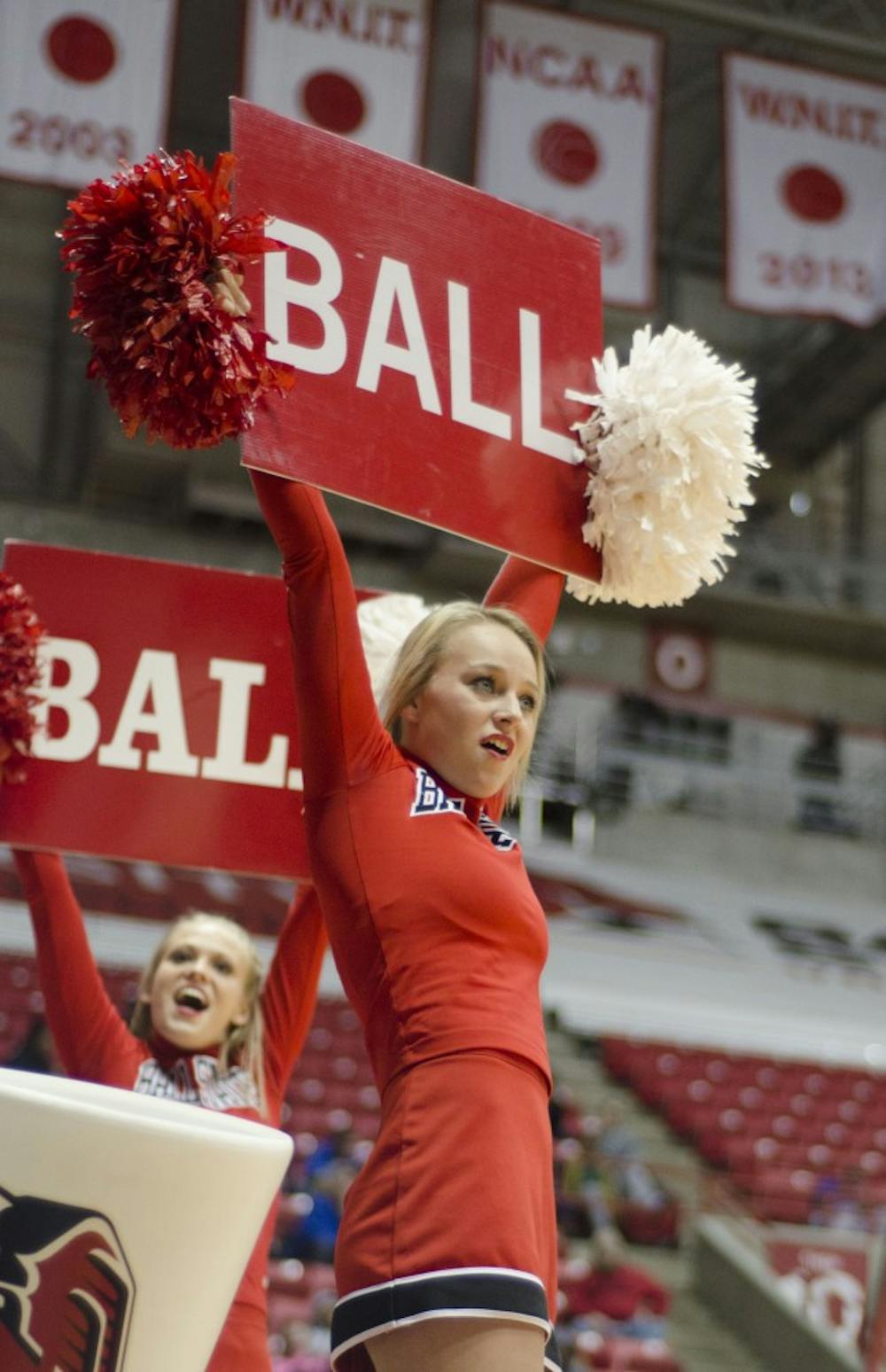A 10-year contract extension between ESPN and the Mid-American Conference signed in August will increase exposure and revenue for member schools. It’s unclear, however, just how much funding is slated to grow.
MAC Commissioner Jon Steinbrecher said the contract’s annual value jumped significantly under the extension through 2026-27. When asked to confirm reports from ESPN’s Brett McMurphy that the conference would pocket $100 million over the life of the contract, Steinbrecher hesitated to offer any ballpark figures.
“Don’t believe everything you read on the Internet,” he said.
Television revenue, NCAA Tournament Units and College Football Playoff payouts, among other items, are combined in Ball State’s 2013-14 athletic budget and listed as an “NCAA funding allocation” — worth $780,000 last year.
According to the report from McMurphy, member schools’ annual television revenue alone would be around $670,000. Though unable to confirm what the new income will be, former Ball State athletic director Bill Scholl said the contract’s value would be substantial in the long run.
“It is probably less significant on the front end,” he said in an October interview. “It’s actually allowed us to look at doing some extra stuff around our programs in the next year or two.”
Interim athletic director Brian Hardin couldn’t say where any additional funds would be used, specifically. The NCAA allocation in the athletic budget isn’t often earmarked for any one purpose. It just helps offset other costs. Hardin added that he wouldn't know the full increase until the contract's first year had cycled through.
Steinbrecher was, however, able to clarify a number of elements within the contract such as conference-wide digital broadcasting expansion. In the early stages of the contract, three universities per year will be prepared to live stream football, men’s and women’s basketball and Olympic sports through ESPN3’s website.
“We’re investing and doing some things that will allow them to provide the software and various other things necessary to provide the productions at the level that are expected,” Steinbrecher said.
As of now, every MAC school has linked an ESPN3 web portal to their home athletic websites. Buffalo, Central Michigan and Northern Illinois will be the first three schools prepped for the full digital package. ESPN has completed a technology audit at Ball State to see how feasible the necessary changes are at this time.
Ball State could be in the second grouping of three schools, Scholl said. Though he believes technology here was no issue, Scholl didn’t want to commit to the “significant budget component” required early on for the upgrades. ESPN will cover some of the charges as well.
“I think [ESPN] needed to move more quickly than we were prepared to have that discussion on the financial side,” he said.
There won’t likely be a jump in the number of games live broadcasted on ESPN television, but the digital component is expected to make every men’s basketball game in three to four years accessible online.
Steinbrecher and his long-time acquaintance Brooke Magnus, ESPN vice president of programming and acquisitions, only began seriously discussing this deal about a year ago. Steinbrecher said the MAC was bringing “significant value” to ESPN for some time.
On top of that, other conferences have inked new television deals as they underwent major realignment, putting the MAC even further behind the curve.
“We were the only FBS conference in the last decade that has neither added nor lost a full-member institution,” Steinbrecher said. “We didn’t have the opportunity to re-open our deal.”
Just like in the previous deal, there will be no contractual look-ins that would allow for early renegotiation of the contract. In recent years the MAC has gained momentum in branding and television ratings. Last season’s midweek football game between Ball State and Northern Illinois that essentially decided the MAC championship drew more than 1 million viewers.
Football head coach and associate athletic director Pete Lembo said Ball State will continue to benefit from those high-scoring, competitive mid-week football games being televised to a national audience.
“We play a mid-week game, and several million people watch,” Lembo said. “What that does for the university — it's hard to put a value on that, in terms of dollars.”





